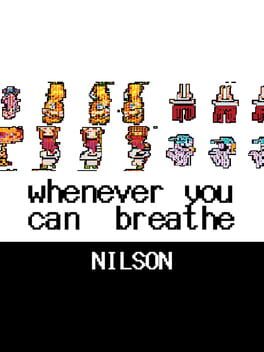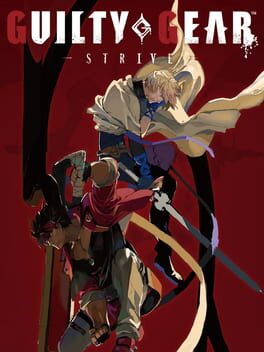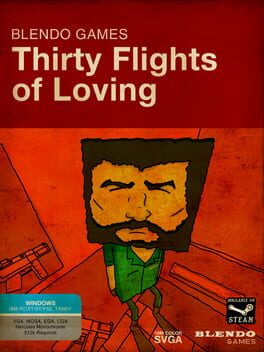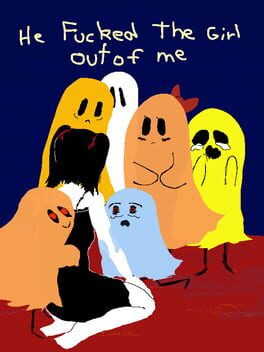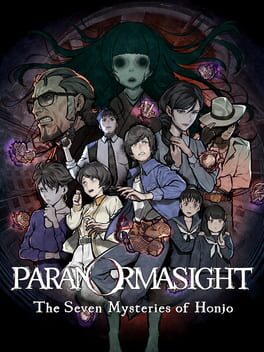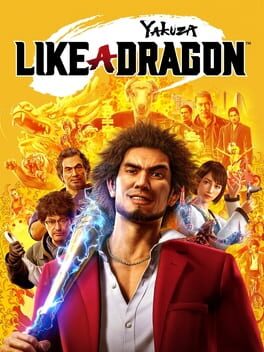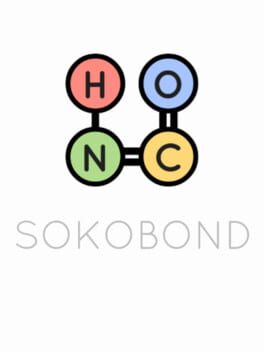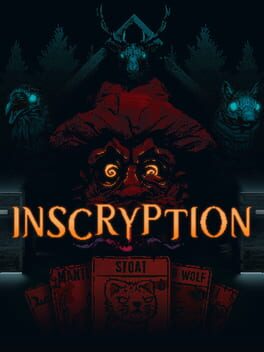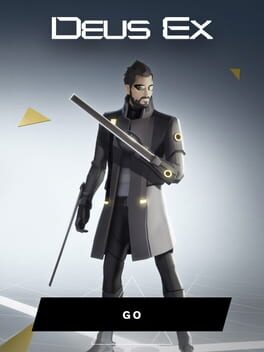done
Culturally queer and nerdy, whenever you can breathe sets a grounded story about mental health in a supermarket staffed by friends. There's three of them, a shopping list, and a lot of encouragement to go to therapy. There's a little bit of traditional videogaming, too, in the form of finding things on the list, some sokobon, and a bit of maze navigation. But that mostly seems there to hang serious dialog on and to remind the main character that they are loved and supported.
2021
After finishing every character's arcade mode, from Asuka "That Man" R. Kreutz to Zato-1, I'm ready to call it on Guilty Gear Strive. The roster is fun and the animations are flashy and I also found most characters easy to pick up and play. Well, not Asuka, but he is the latest DLC character and I assume Arc Sys wanted to go all-in on a unique character in his case. Too bad that the online is a mess. The lobby system makes a kind of sense for matchmaking if I look at it upside-down and squint, but it mostly seems like it makes it difficult to get a game. Opening up cross-platform play helped with that a bit, but it also opened the door to other issues. Still, this is the first fighting game in a long time in which I've wanted to genuinely give each character a fair shake.
Often an inspiration, few games of its kind are as entertaining as Thirty Flights of Loving. I think putting a criminal crew and caper front and center probably helps with that. But that wouldn't be enough without a great feeling for visual storytelling, music and sound effects, and the playful absurdities that (according to the "director's commentary" mode) sometimes reflect happy accidents in working within a game engine. Worth playing twice.
This game deftly handles some very challenging subject material. Challenging for me to read and play, anyway - as a semi-autobiographical game, it is a brave statement about the experience and consequences of being a sex worker. There's plenty of media out there about trauma, but few pieces offer such an insightful picture. Doing so using the tools available on a Game Boy Color is remarkable.
2023
An intriguing story told well, with detailed art and good pacing. The opening premise has a little bit of mystery in it, not only in describing the main character as an exiled botanist on the moon but in relaying that the reason for exile is researching and creating sentient plants. What "sentient plants" means is unpacked in this short story, which develops into a transformational one for the active character at its center.
About 45 minutes or so into PARANORMASIGHT, I had an experience that I have since described as "getting videogamed". It's a great moment in which it becomes clear that this period horror VN embraces its medium. Touches of that can be light, as in the impressive visual illusions of camera work that cut, pan, and zoom, or heavy, as with the many puzzles that require the player to adjust timelines and characters in order to progress the story. It's a satisfying mix of art and mechanics put to narrative use, and as a result this one comes out with even more substance than it has style.
2020
In 2023, this one might be a bit worse than when it launched. The battle pass and a current emphasis on levels made with their level generation tool hinder a good time and feeling of progress. That's unfortunate, as many of the levels with themes and focused mechanics can be very fun or even great. The visual humor is still enjoyable, from the way the guys waddle and dive to how they slide down slimy slopes like penguins. Moments of ragdoll chaos can still draw a smile out of me, too.
Ichiban Kasuga is a lovable fool with a heart of gold from start to finish. He's a great protagonist who makes friends quickly and treasures each one. The switch from brawler to turn-based party combat emphasizes that quality in an inspired use of videogame mechanics. It's a good representation of the direction of the Yakuza series since 4, which has been more about overcoming obstacles together than it is about a single hero.
However, there are some qualities that still need some work. I would have liked substories to grant XP in addition to their other rewards and the game could do more to give a spotlight to its own job system. As it went for me, there was also some repetition and lost hours to some unlucky dungeon deaths. That unfortunately distracted from the story and its characters, which are ultimately the bigger draw than the combat. All the same, Like A Dragon has some of the most lovable characters in videogames and it gave me plenty of time with them. Here's to the friends we made along the way!
However, there are some qualities that still need some work. I would have liked substories to grant XP in addition to their other rewards and the game could do more to give a spotlight to its own job system. As it went for me, there was also some repetition and lost hours to some unlucky dungeon deaths. That unfortunately distracted from the story and its characters, which are ultimately the bigger draw than the combat. All the same, Like A Dragon has some of the most lovable characters in videogames and it gave me plenty of time with them. Here's to the friends we made along the way!
2014
This is a minimalist, focused, puzzle-solving experience. While I preferred the puzzles that introduced more novel elements, I can also respect Alan Hazelden and Harry Lee's drive to iterate heavily on a small range of elements. That ramped up the difficulty quite a bit, in my experience. That sometimes led to frustration, usually for later puzzles in which it seemed that I had to figure out the best opening and full sequence for a solution. I liked the puzzles that more obviously allowed for multiple paths to a solution better - despite being easier, I had a greater sense of accomplishment in solving them and less of a sense of trial and error. Even so, these puzzles kept me coming back, bit by bit, sometimes with months in between.
2021
This review contains spoilers
There are three key things that I enjoyed about Inscryption: the way the card game develops as you continue through the story, the way that story is structured, and the incorporation of a found footage-style FMV narrative frame. It's a little uneven, but in a way like a roller coaster - I felt a climb near the start of most acts, followed by a swiftly accelerating turn to the end. That worked overall, especially with the way the end of the game rushes by, even if it dragged a bit in the middle.
1998
From the CG intro to the bright yellow menus to Kohta Takahashi's outstanding OST, this is a time capsule of the aesthetics of 1998. The racing is classic arcade-style and, in my opinion, that makes manual transmission the only option. Courses and events are varied, for what's here, and the GP story frames are fun. The downsides are the small number of tracks and events. With the exception of some story, players will have seen most of what there is to see after a single trip through GP mode. Then again, what's here can be replayed endlessly. This game is so polished, and its presentation is so pleasant, that I know I'll keep coming back.
I can see why this one is regarded as such a disappointment. Level design is rote and it feels as though there are only pro forma gestures at dead ends that are off the main path. The plot is meager and derivative, with comically bad pacing that backloads exposition into the final scenes of the last chapter. That said, I enjoyed the Punch-Out-in-space-jail combat and the gore is great. Unfortunately, even the blood and guts lose their glossy luster with repetition.
2016
A decent bit of turn-based puzzling, wrapped in visual layers of stealth and combat. But it doesn't do much with that wrapping. It's as though someone sent some bullet points that said Deus Ex was about stealth, hacking, and corporate conspiracy. None of that is consequential and the writing is minimal. At least the board game-style mechanics are still entertaining enough for a round here and there. The bigger shame is that this is the last drop of Deus Ex that I had left to play.
Armored Core VI is a thrilling and captivating game. It can also be a frustrating and poorly balanced one, but that's par for the course for this series. I would have liked the arena fights to be more challenging and would also have preferred that some of the big boss fights be more symmetrical to the abilities and constraints provided to the player. That said, I love playing this game. The implementation of the garage and parts store is fantastic. That is complimented by checkpoints that are, for the most part, well-placed. It's a very good thing that the team at From wanted to give players the option to tinker, adjust, and warehouse different builds for different opponents and styles of play.
The story also turned out to be above-average and the English localization and VO help that along. In particular, I think that there are surprisingly robust themes around identity, selfhood, and choice. While Armored Core may not be the first place that people look for consonance between narrative and gameplay, the team behind this one has some good ideas about the deeper symbolism that can be derived from smashing together combat machines that are the size of small apartment buildings.
The story also turned out to be above-average and the English localization and VO help that along. In particular, I think that there are surprisingly robust themes around identity, selfhood, and choice. While Armored Core may not be the first place that people look for consonance between narrative and gameplay, the team behind this one has some good ideas about the deeper symbolism that can be derived from smashing together combat machines that are the size of small apartment buildings.
2021
The setting for this game is its finest quality. Plenty of level designers take inspiration from theme parks , but I like how Alan Wake has to move through a forest park. The early episodes that focus on that are mostly fun to play and it makes sense as a setting in which characters are dependent on flashlights and generators. I also enjoyed how the game eventually made good on providing the town of Bright Falls as a level. But man, even with plenty of tongue-in-cheek humor about it, Alan Wake the character is a hack. Part of the horror here is the thought of being trapped in such a badly-written story.
